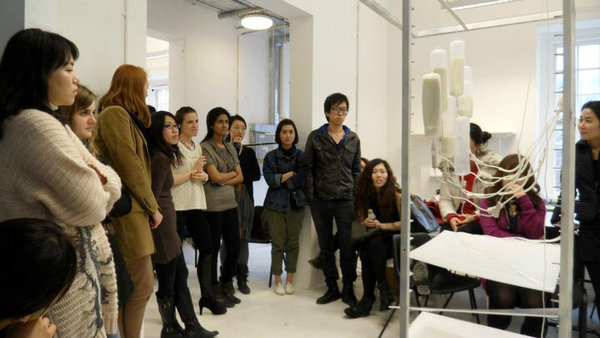The advantages of a different approach
Many Chinese art students abroad say the biggest challenge they encounter in their studies is the different approach to education. But that is also their biggest reward.
"In China, basic techniques and skills are the priority. The standards of assessments are strict and rigid," says Wang Tian, a 31-year-old fashion designer in Guangzhou, capital of Guangdong province. "In Western countries, the ability to think independently holds more weight."
Wang runs a design studio and tutors fashion design students in the international art program of the art school of the Guangzhou Academy of Fine Arts.
She advises students on their portfolios, helps them with critical thinking habits and suggests improvements to their designs.
Wang started to learn painting when she was 6 and took part in various Chinese art classes in the following decade. She was admitted to the London College of Fashion in 2006 at age 19.
But her studies in London were not always smooth sailing, especially in the beginning.
Her paintings, which perfectly recorded the shape, shadow and other details of their subjects, were "dim and without features", Wang says.
Her classmates, on the other hand, displayed abstraction, expressed proportion or employed multimedia methods in their paintings. Some used sponges, cotton swabs or their fingers.
But it was also the emphasis on critical thinking and constant questioning that helped make Wang more curious about the things around her and think creatively. Those proved some of the most enriching parts of her education abroad.
Zhang Yan, a Guangzhou-based jewelry designer, is also aware of the differences in art education between China and the West.
She earned her bachelor's degree in industrial design at the Guangzhou Academy of Fine Arts. She furthered her studies at the School of Jewellery of Birmingham City University in the United Kingdom and received her master's degree in jewelry, silver goods and related products.
"Art education in China focuses on the consequence," says the 29-year-old from Hunan province. "Teachers, parents and even students pay more attention on the finished product, the final result."
In Western classes, the process of research and production is much more valued than the result, she says. Students' opinions are respected rather than simply judged as good or bad.



















